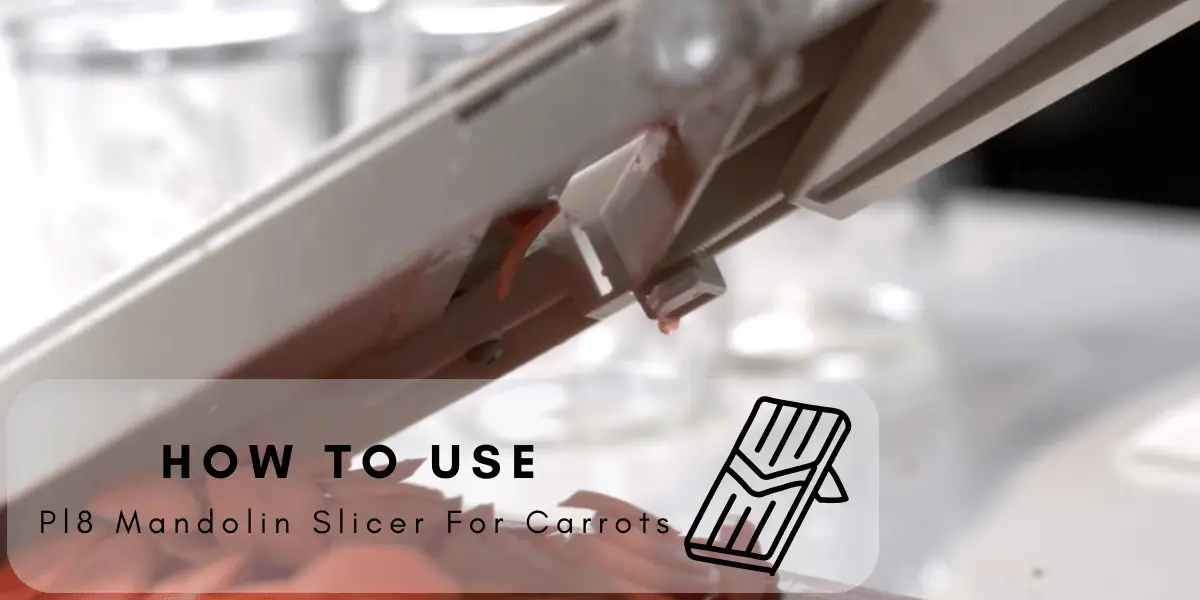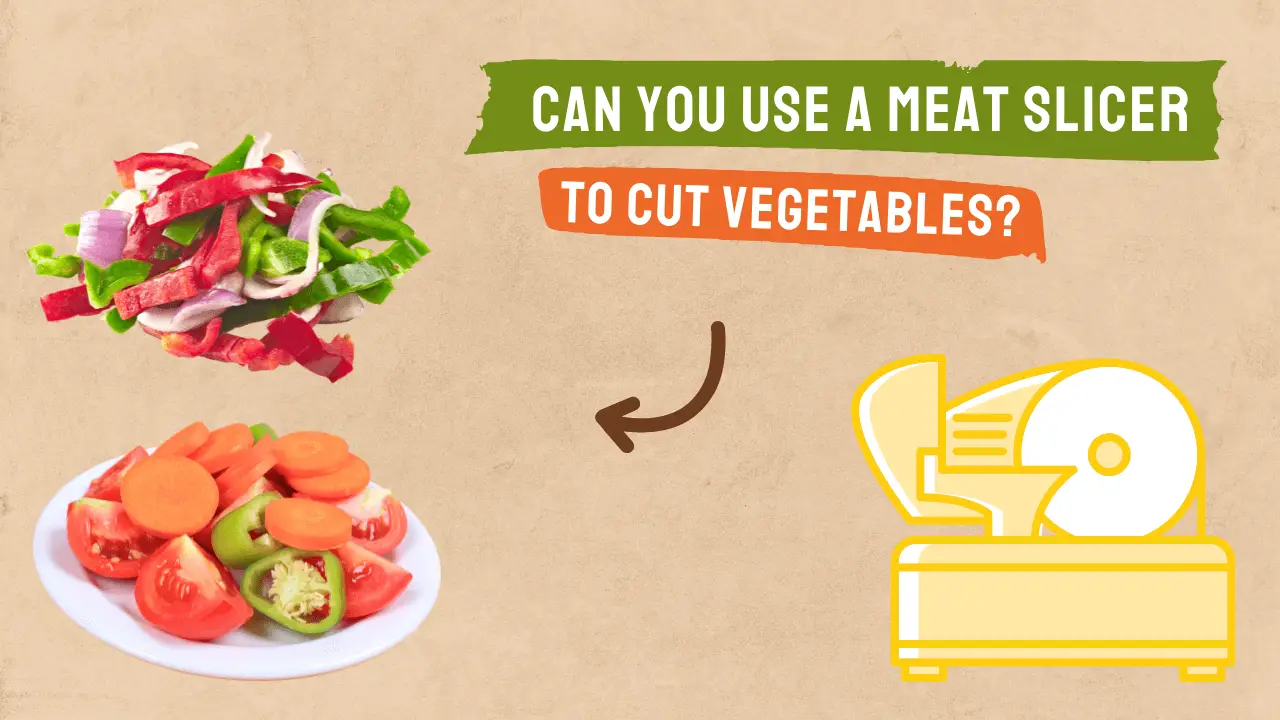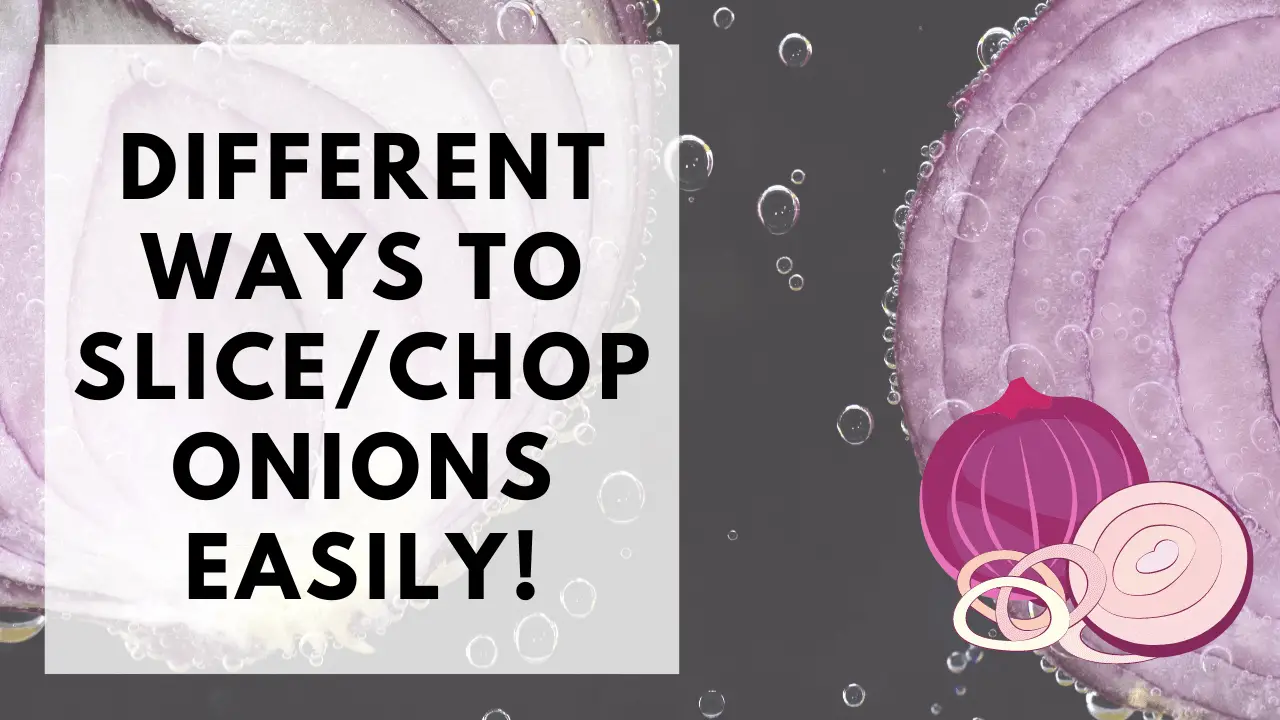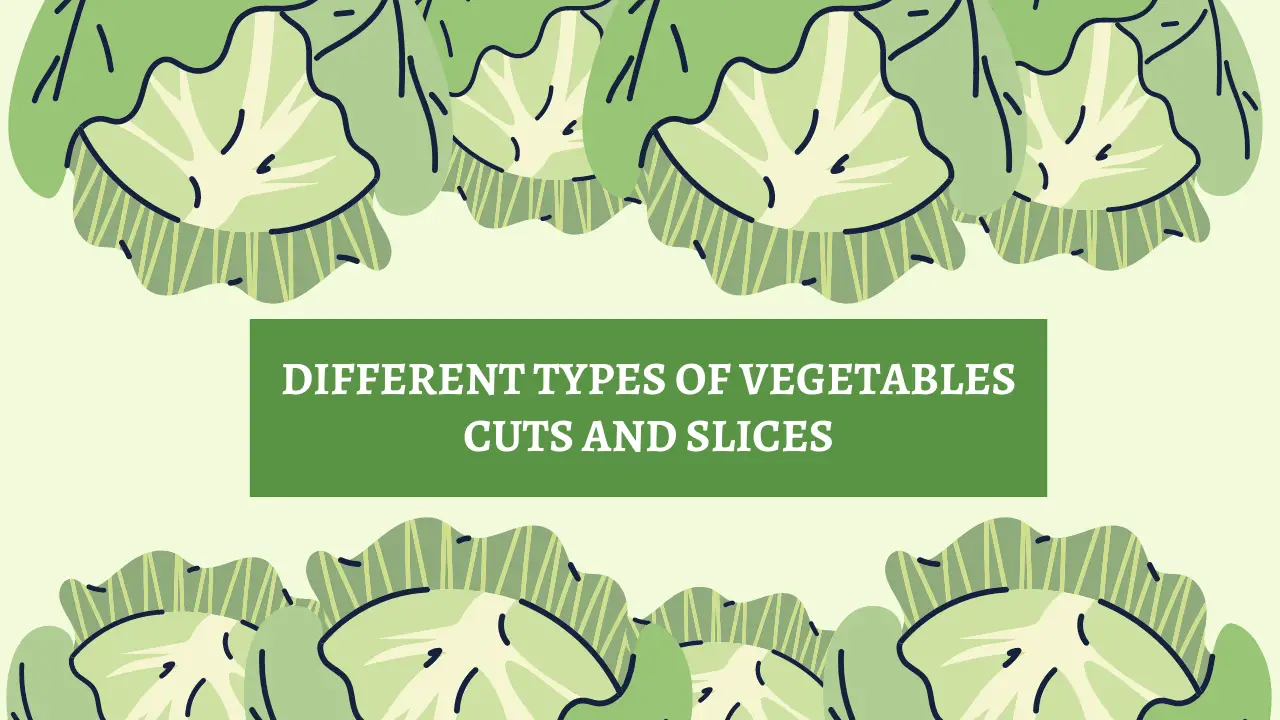Direct answer:
Julienne slices refer to food that has been cut into thin, matchstick-like strips, typically 2-3 inches long and 1/16 to 1/8 inch thick. This method can be used on a variety of foods such as carrots, bell peppers, cucumbers, zucchini, and apples.
Julienne slicing is a culinary knife technique where food is cut into long, thin strips, resembling matchsticks. This technique is ideal for firm produce like apples, carrots, celery, bell peppers, beets, and root vegetables, as it ensures quick and even cooking or marinating. To Julienne, you’ll need a sharp kitchen knife, a wooden cutting board, and possibly a vegetable peeler or a Julienne peeler. The process involves washing and peeling the vegetable if necessary, creating a flat surface for stability, slicing the vegetable into 1/8th inch thick slices, then cutting these slices lengthwise into 1/8th inch strips.
What Is Julienne Slicing?
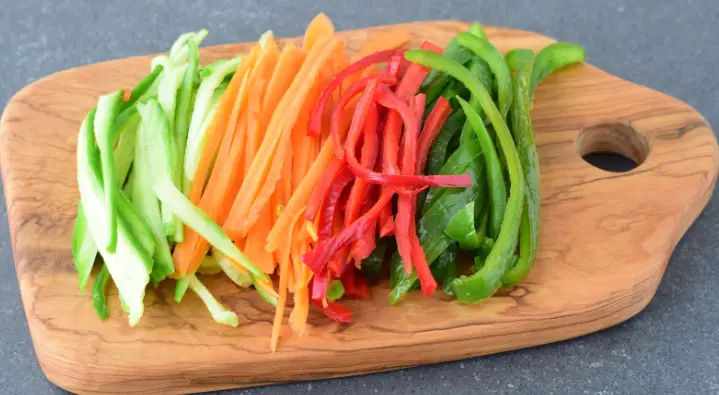
Julienne slicing, also known as “allumette” in French culinary terms, is a method of cutting by which food items are sliced into thin, uniform matchstick-like pieces. The dimensions are usually about 2-3 inches in length and 1/16 to 1/8 inch in thickness. This technique is commonly applied to vegetables such as carrots, bell peppers, and cucumbers, but can also be used with other foods. The result is an aesthetically pleasing cut that cooks quickly and evenly.
The Appeal Of Julienne Slicing
The Julienne cut is widely celebrated in the gastronomy world for its aesthetic appeal and practicality. Its uniform dimensions allow for quick, even cooking or marinating, making it an ideal choice for firm produce like apples, carrots, celery, bell peppers, beets, and root vegetables.
The Tools Needed For Julienne Slicing
Perfecting the Julienne cut is a breeze with the right tools at your disposal:
- Kitchen Knife: An 8-inch sharp chef’s knife is your best ally. Its sharpness ensures easy slicing through even hard vegetables and helps prevent injury.
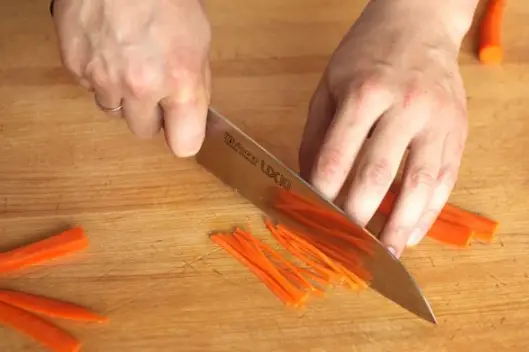
Using Knife - Wooden Cutting Board: Stability is key in achieving precise cuts. Wood proves to be a superior choice over plastic in this regard.
- Vegetable Peeler: While not always needed, it can come in handy for certain types of food.
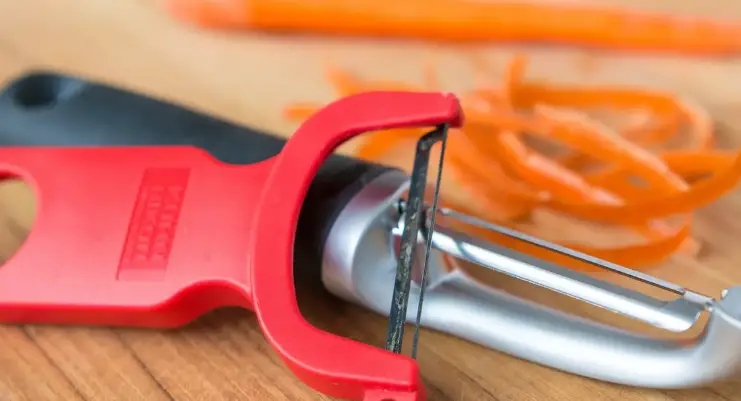
Using Vegetable Peeler - Julienne Peeler: If wielding a chef’s knife seems daunting, a Julienne peeler is a good alternative. However, be aware that this tool gives you less control over the size of the pieces and often produces smaller strips.
How To Cut Julienne Strips?
Step 1: Peel the Vegetable: If necessary, peel the vegetable. Some vegetables like carrots, cucumbers, or zucchini may require peeling, while others like bell peppers do not.
Step 2: Place It on the Cutting Board: Position the vegetable on the cutting board. Ensure that it is stable and won’t slip while you’re cutting.
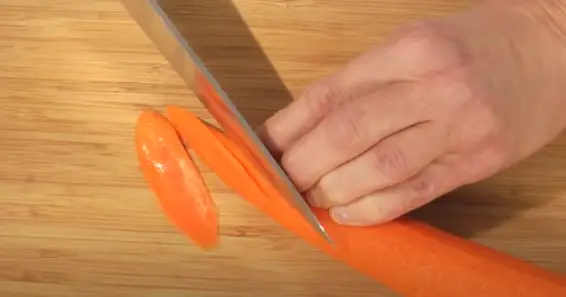
Step 3: Cut the Vegetable into Sections: Hold the vegetable firmly with your fingertips and slice it crosswise into 2-1/2- to 3-inch lengths.
Step 4: Create Slabs: Take each section of the vegetable and cut it lengthwise into slabs of about 1/8th inch thickness.
Step 5: Stack the Slabs: Carefully stack a few slabs at a time. Make sure they are aligned for the next cut.
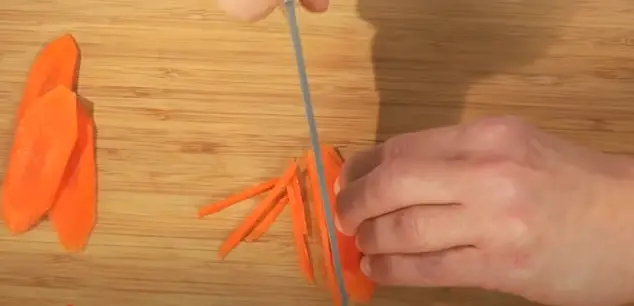
Step 6: Cut into Strips: With the slabs stacked, cut them lengthwise into 1/16- to 1/8-inch-thick strips. The strips should now have the same width as the original slabs.
Perfecting The Technique: How To Julienne An Onion?
Julienning an onion may sound complex, but once you understand the technique, it becomes a simple task that significantly enhances your culinary prowess. Here’s a detailed, step-by-step guide to help you master the art:
Step 1. Preparing the Onion: Start by trimming the top and bottom of the onion. Then, gently remove the outer peel, ensuring the layers of the onion remain intact.
Step 2. Cutting the Onion in Half: Stand the onion on one of its ends, and carefully cut it vertically into two equal halves. This provides you with a stable base for the following steps.
Step 3. Positioning for the Julienne Cut: Pick one half of the onion to work with first. Place it cut side down on your cutting board with one of the round edges facing your knife. This position allows for precision as you make the Julienne cuts.
Step 4. Making the First Cut: Angle your knife at about 45 degrees relative to the cutting board. Start from one side of the onion and slice downwards, creating thin, matchstick-size pieces.
Step 5: Progressing with the Cut: As you proceed with the cutting, do so in a radial manner, gradually changing the angle of your knife with each slice. This helps in achieving those uniform Julienne strips.
Step 6. Navigating the Center of the Onion:
When you reach the center of the onion, your knife should ideally be at a 90-degree angle to the cutting board. Continue with the slicing until you’re most of the way through.
7. Finishing the Julienne Cut: As you approach the end of the onion half and it begins to feel unstable, carefully flip over the onion. Continue slicing in the same manner until you’ve julienned all of the onion.
And there you have it! A perfectly julienned onion ready to add a touch of professional culinary flair to your dishes. Now repeat with the other half. Practice this technique, and soon you’ll be julienning onions like a pro!
How To Julienne Carrots?
Mastering the julienne technique with carrots, those vibrant, healthy sticks of delight, can take your culinary skills to a whole new level. Here’s how to julienne carrots using two distinct methods:
The Classic French Method:
Step 1: Prepare the Carrot: Start by peeling the carrot. Then cut it into 2 to 3-inch lengths. This length is ideal for manageable julienne strips.
Step 2: Create a Stable Base: To ensure safe cutting, slice a thin piece off one side of the carrot to create a stable, flat base.
Step 3: Slice into Planks: With the flat side resting against the cutting board, slice the carrot into uniform planks, each approximately 1/16 to 1/8-inch wide. The key here is uniformity to ensure even cooking.
Step 4: Cut the Planks into Strips: Stack a few planks at a time. Cut them lengthwise into 1/16- to 1/8-inch-thick strips, mirroring the width of the planks.
The Simpler Method:
Step 1: Slice on a Bias: Begin at the root end of the carrot. Slice the carrot thinly on a diagonal. The bias cut increases the surface area, making it easier to create the julienne strips.
Step 2: Slice into Matchsticks: Stack a few slices at a time, and then slice them lengthwise into uniform, thin matchsticks. This method produces fewer scraps, ensuring you get the most out of your carrot.
Each of these methods has its advantages. The classic French method emphasizes precision, while the simpler method maximizes efficiency and reduces waste. Feel free to experiment with both techniques and choose the one that suits your style best. Not limited to carrots, you can apply these techniques to other round, firm vegetables like zucchini, parsnips, and celery.
How To Julienne Soft Vegetables Like Tomatoes?
When it comes to julienning, not all vegetables are created equal. Soft vegetables like tomatoes can pose a unique challenge due to their delicate structure, but don’t fret! With the right technique, you can julienne them just as expertly as any other vegetable. Here’s how:
Step 1. Quarter the Tomato: Start by washing the tomato and cutting it into quarters. This makes it easier to handle during the subsequent steps.
Step 2. Prep the Quarters: Lay each quarter on the cutting board, skin side down. This position stabilizes the tomato and makes it easier to slice.
Step 3. Separate the Seeds from the Flesh: Using your knife, gently run it between the seeds and the flesh of the tomato. Aim to separate these parts without damaging the flesh. Continue with this careful slicing in one continuous movement until you’ve separated the flesh from the seeds.
Step 4. Julienne the Tomato Flesh: With the tomato flesh now free of seeds, lay it skin side down on the cutting board. Now, just as you would with a firm vegetable, cut the flesh into fine julienne strips.
Step 5. Repurpose the Seeds: Don’t toss away the seedy part of the tomato. Although not suitable for julienning, this part is full of flavor and can be saved for use in sauces, broths, or other dishes.
This technique allows you to julienne soft vegetables like tomatoes without losing their essence. It’s perfect for creating vibrant, seedless salads or adding a touch of elegance to your gourmet dishes. Remember, the key is to gently handle the tomato to preserve its natural shape and texture.
FAQ
What vegetables are commonly Julienne cut?
The Julienne cut is commonly used for firm produce like apples, carrots, celery, bell peppers, beets, and root vegetables.
Can I use a normal peeler for a Julienne cut?
A normal peeler won’t give you Julienne cuts. However, a Julienne peeler, specifically designed for the task, can be used if you’re not comfortable using a knife.
What’s the primary advantage of a Julienne cut?
The primary advantage of a Julienne cut is its uniform dimensions that ensure a quick and even cooking or marinating.
Why is it important to cut vegetables uniformly?
Cutting vegetables uniformly is important for even cooking and better presentation. Uniformly cut pieces will cook at the same rate, reducing the risk of having some pieces undercooked or overcooked.
How should I wash vegetables before cutting them?
You should thoroughly rinse vegetables under cold running water before cutting them. For certain vegetables with tough skins, a vegetable brush can be used to remove any dirt or debris
What is a batonnet cut?
Batonnet is a French term for a culinary knife cut in which the food item is first julienned and then cut into short, 2-inch-long pieces.
Conclusion
Key Takeaways
- Julienne slicing is an elegant, precise cutting technique, that creates long, thin strips of food.
- It is ideal for firm produce, ensuring quick, even cooking or marinating.
- Essential tools for Julienne slicing include a sharp kitchen knife, a wooden cutting board, and optionally, a Julienne peeler.
- To achieve a Julienne cut, prepare your vegetable, create a flat surface for stability, cut into slices, then into strips.

John Hebdon is a food enthusiast, passionate chef, and author of various articles and blog posts related to food and cooking. With a deep love for all things culinary, John’s blog serves as a platform to share his extensive kitchen experiences with a broader audience.
In addition to his culinary expertise, John has a flair for writing and a natural ability to share his passion for food with others. His articles and blog posts are informative, engaging, and packed with practical tips for readers of all skill levels.
As a food enthusiast and writer, John is always on the lookout for new and exciting culinary experiences. Whether it’s trying out a new restaurant, experimenting with a new recipe, or simply sharing a favorite dish with friends and family, John is always eager to explore and share the world of food with others.

